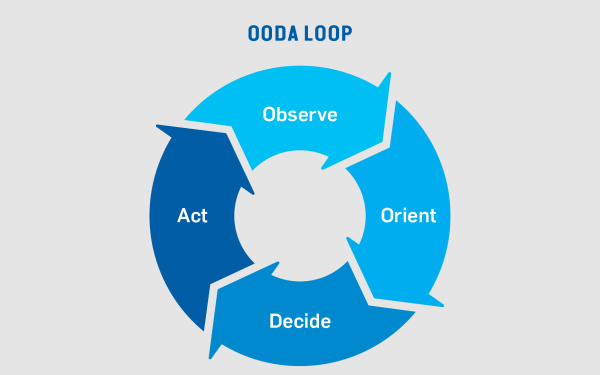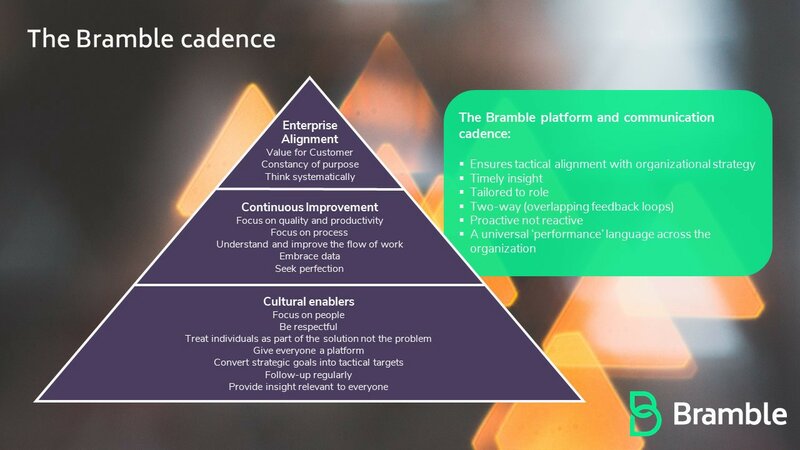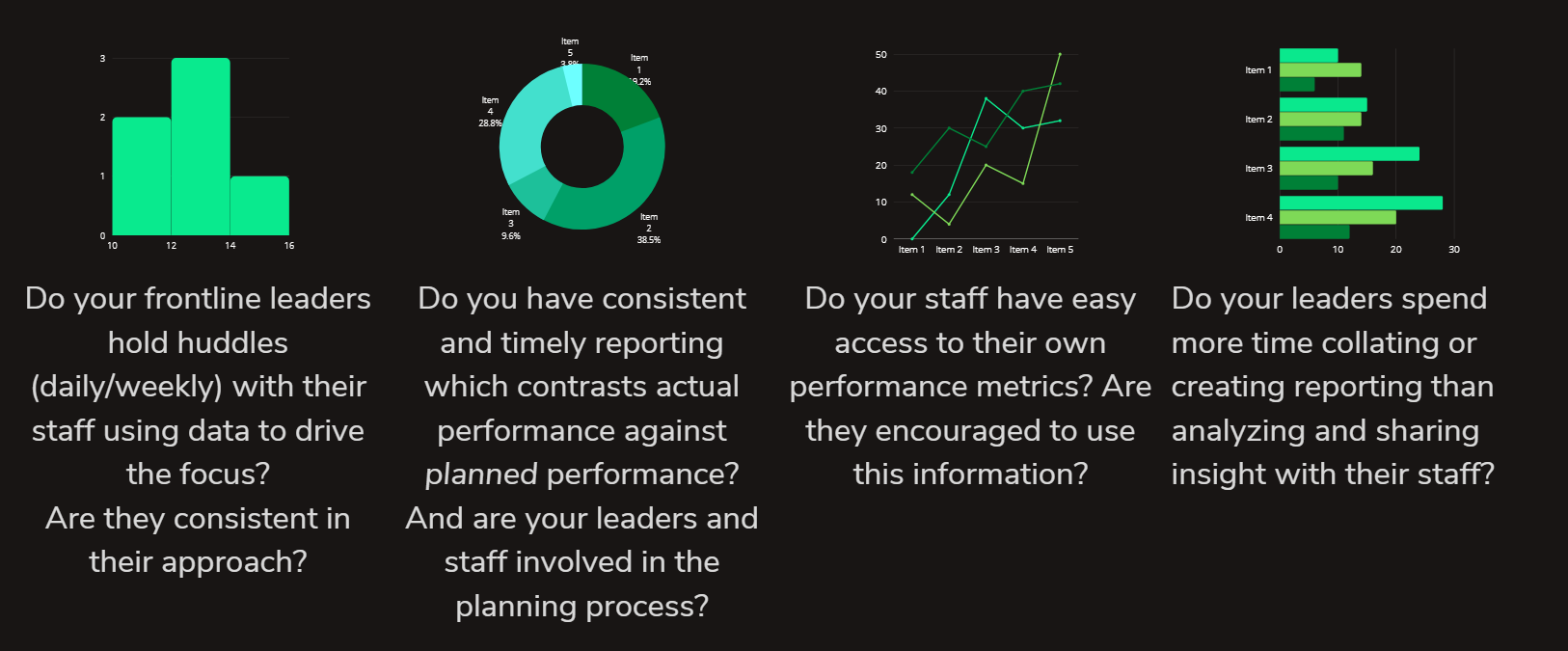
OODA loops and the importance of your communications cadence
You’ve probably decided on your strategy post-COVID. Before you execute, it may be worth having a think about OODA loops, and what your go-forward operating model and communication framework will do to yours.
OODA loops (Observe-Decide-Orient-Act) is a term given to what essentially boils down to feedback loops. Specifically, the methodology is concerned with how quickly you, your leaders and your organization can make informed decisions and act upon them given what is known about the environment you operate in.
COVID has forced us all to do things differently. This is not a bad thing. 94% of 800 employees in a recent Mercer survey stated that productivity was the same or higher than pre-COVID and 81% hope to remain remote.
Overall, we have largely solved how to remain productive with most of our workforce at home. The challenge as we all execute our go-forward strategies will be to ensure we have the right cadences (feedback loops) coupled with meaningful metrics in place to keep people engaged and making good, timely decisions…this is where OODA comes in.
Why should you care about OODA loops?
The real purpose of the OODA methodology is to get you thinking about your communication framework, the dissemination of information within your organization and how quickly we as leaders can act upon it.

In the context of post-COVID; how we interact and engage with staff has dramatically changed. We can no longer rely on ‘observing with our own eyes’ what is occurring across the floor. It’s much harder to have those impromptu chats that so often lead to break-throughs when we are not sharing water-coolers!
Yet work continues to flow, the need to remain competitive and service your clients has not diminished…so how are you going to augment your communications framework to make sure you don’t tread water or lose ground? How are you going to get the most out of your people when most of the time they are on their own island?
What is the Bramble cadence and how does it help?
One of the challenges associated with remote work is ensuring a certain level of uniformity across roles. This is less of an issue for Individual Contributors (SOPs, process mapping and knowledge bases are designed to minimize variability) yet in our experience, most companies tend to have a blind spot when it comes to leadership habits and their effectiveness.
The Bramble Cadence is a set of configurable feedback loops that work hand-in-hand with operational reporting. By combining data with a communications framework, Bramble dramatically speeds up the time taken to work through your OODA loop.

Brambles’ series of cadences are designed to ensure tactical alignment with organizational strategy — everybody is acutely aware of the role they play in executing the company’s objectives.
The Bramble Cadence is built on three fundamental elements:
- Meaningful and timely metrics to pair with a leader/staff action
- A structured approach to sharing and communicating insight across your organization that is tailored to role
- Speed to orient, speed to action. Bramble is extremely intuitive, it is our mission to get all actionable insight into the ‘right-hands’ with one click.
The Bramble Cadence ensures that every staff member and leader has a rapid, timely touchpoint to review and act upon fresh operational metrics regardless of their physical location.
So how does your department/organization stack-up?
The concepts of the Bramble Cadence & OODA loops are hardly controversial!
However the implementation of insightful metrics and the right communications framework to support them can be tricky!
How does your organization/department fare on the following questions?

If you answered ‘No’ to any of the questions above, we recommend having a session with your team to brainstorm just how you can introduce these cadences to best augment your go-forward strategy. Or…you could have a chat with Bramble to better understand how we can help you ensure a smooth and productive transition to your future-state operating model.

